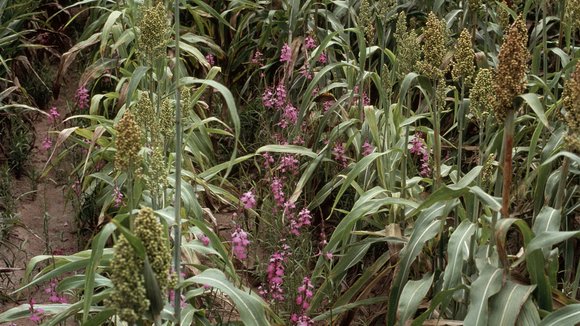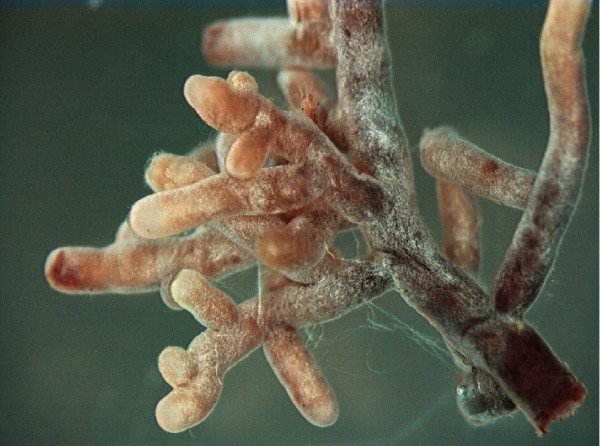Protection
Sorghum bicolor is the world’s fifth-most important cereal crop. It is grown in many places, particularly in the area surrounding the Sahara desert. However, a large percentage of sorghum yields is lost due to a weed called Striga hermonthica, also known as purple witchweed. This parasite attaches to the roots of the sorghum plant and so causes a large percentage of the harvest – sometimes over 90% – to be lost. There is not much the local small-scale farmers can do about this, which means that hunger and poverty are now on the rise in the affected areas. An international team led by the Netherlands Institute of Ecology (NIOO-KNAW) and subsidised by the Bill & Melinda Gates Foundation will now investigate how soil microbes may provide some crop protection.

The purple weed (Striga hermonthica) grows on the roots of many types of crops, such as maize and sorghum, and ruins large parts of farmers’ harvests.
No holy grail
The project is called PROMISE, an acronym that stands for Promoting ROot Microbes for Integrated Striga Eradication. The emphasis of the international study will be on soil life. First, the researchers will map the microbial diversity of the African soil. ‘Our strength is in the ecosystem-focused approach, whereby we will investigate the interaction between microbes, plants, soil properties and control measures. After all, there is not really one holy grail. The solution will be an integrated strategy,’ explained Jos Raaijmakers, a project manager and microbial ecologist with NIOO, in a press release.
Signal substances
The parasitic weed is able to find sorghum plants because of the signal substances in the roots of sorghum plants. When sorghum suffers a phosphate deficiency, it releases certain molecules, whose objective is to attract symbiotic fungi that give the plant nutrients from the soil in exchange for sugars. However, the signal substances have an adverse side-effect, in that they are also recognised by Striga. Since African farmland is getting increasingly nutrient-deficient, particularly phosphate-deficient, its crops are releasing more and more signal substances. As a result, millions of hectares of farmland have been infected with Striga.
Long-term process
Raaijmakers and his team are exploring various options, ranging from microbes that suppress the growth of Striga to micro-organisms that remove Striga seeds from the soil. However, it will take a while before this research will result in solutions that can actually be applied. ‘It is a long-term process. We expect the study results to be applied ten years from now.’
Source: NIOO

